The Other Side of ‘Indian Matchmaking’: The Indian Divorce
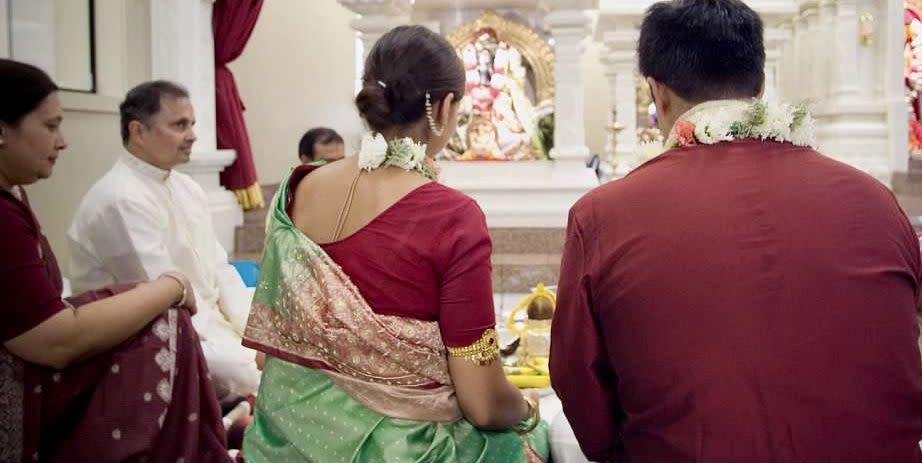
A copy of my marriage vows hung in the bathroom of my marital home. These seven promises were tied to the seven steps I took with my husband around a sacred fire as hundreds watched at our Hindu wedding in San Diego in 2006. By Indian matchmaking standards, our “biodata”—education levels, religion, even height—as a couple was almost perfect.
Over the course of my decade-long marriage, my father made several copies of our vows for us. I had hidden all but that one. Every time I entered that bathroom, I would grade myself on each vow, a test to determine my marriage’s fate. I aced promises like “sharing our possessions,” but gave myself an F at promising “to live with me for our entire lives.” How could this happen to a couple that had checked all the culturally-valued boxes?
In weighing my divorce, I was burdened not only with disappointing my parents, but also by being the first to break my ancestors’ perfect marital record. India has one of the lowest divorce rates in the world, and divorce can bring shame to families and to women in particular. I worried over what our community would think and whether I would still have a place in it afterwards. Netflix doesn’t show this part of Indian customs.
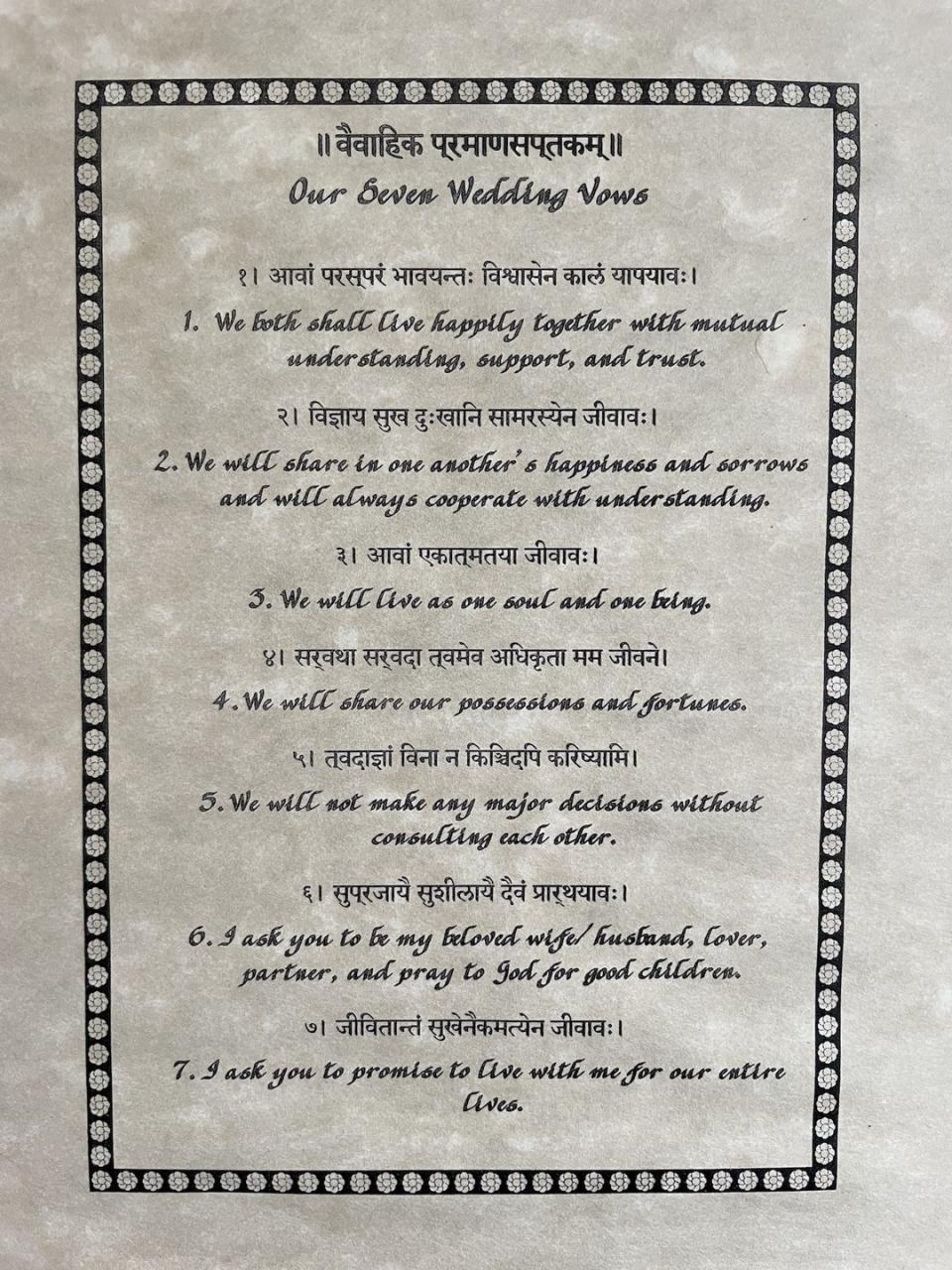
There are terms for immigrant children straddling the fence of two cultures. For South Asians, or Desis, and their immigrant children born in America, we are called “ABCD” or American Born Confused Desi. In food and wellness trends, east meets west is an embraced ideal, like matcha chais. But the concept is not easily applied to humans. The choice of who we marry is a critical juncture for second generations like me. In matrimony, we decide which part of our complex identity we choose to honor and carry forward: prioritizing our family tradition or creating a new, more Westernized version of ourselves.
My father immigrated to Tulsa, Oklahoma from Maharashtra, India, in the late 1960s with only a few dollars in his pocket. Survival required trailblazing. He selectively adapted to the local culture. His code of living—or dharma, as it is referred to in Hindu texts—gave him permission to abandon certain generationally-held traditions like being vegetarian. Being male, he was freer to pursue this. So Dileep Joshi became “D.C.” or “Josh Joshi,” though his views of marriage remained unchanged.
Before turning 30, he returned to India to wed. He met my mother, who was 19 at the time. There was no need for a matchmaker like Seema Aunty, as his family already networked with suitable families that were socially, religiously, and astrologically compatible. My mom and dad met and mutually consented to marry, all within a span of a few weeks, as was typical in arranged marriages back then.
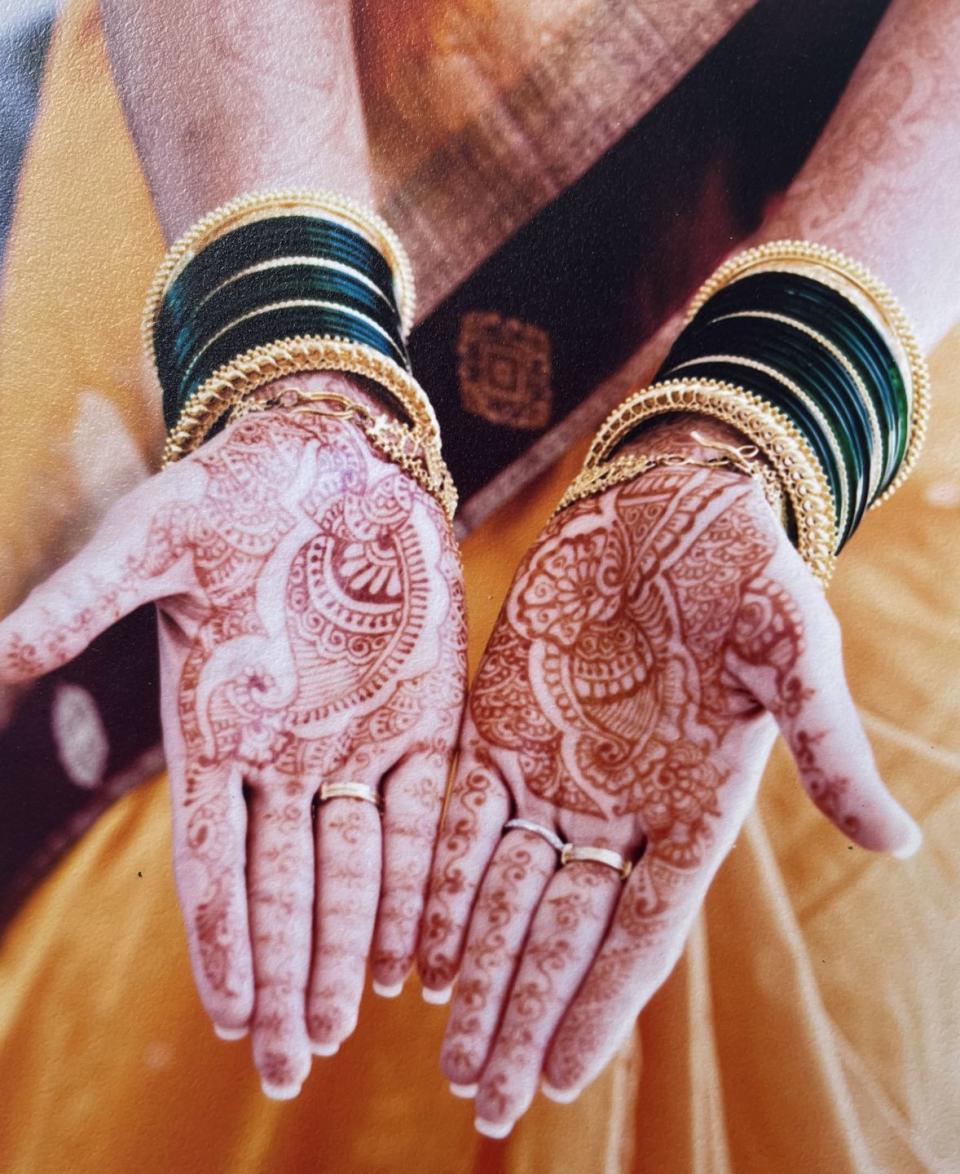
Their conservative, 1960s Hindu Brahmin values laid the blueprint for marriage. So did a cultural ethos that still exists in India. In Hindi, Indians say “log kya kahenge,” similar to “What would people think?” This concept kept me in my marriage years after my heart left it.
I grew up in Oklahoma City in a middle-class home that blended in with the neighborhood. When you entered, though, the smell of turmeric and asafoetida wafted through the house. You would hear Marathi spoken and see statues of Hindu deities like Ganesha and Krishna. Despite her career as a software engineer, my mother did the housework and cared for her three children and in-laws, as part of the Indian norm at the time.
Though she never complained, I would on her behalf. “Dad, why can’t you help?” I yelled while caring for my baby brother. My mother frequently calmed me, saying there was spiritual honor in accepting our roles in life. “My marriage will be different. Equal. American,” I journaled.
Individual happiness was also deemed too American, but I desired it, along with the values I saw on Family Ties. The scene where the father hugged Mallory after she flunked a test was the part of Western life I wanted most.
I experimented with my identity, like during roll call on the first day of any school year. The teacher would botch the pronunciation of my name and ask, “Do people ever call you Bonnie?” “No, just Shibani," I sassed. Despite my American hairstyle, I would not blend certain Indian parts of myself. In this way, my own dharma was emerging.
My parents encouraged my independence. I was taught to mow the lawn and, at 13, balance a checkbook. They unknowingly groomed an alpha Indian-American female. I knew how to make approval rain on me. External achievements were the primary source. But I knew the choice of whom I married would be a major windfall.
In early encounters with my future ex-husband at Harvard Business School, I saw he had many of the traits I sought in a husband: ambitious, handsome, a family guy, and crucially, he was Indian-American. He gave great, plentiful hugs. Like my father, he had a jovial spirit, an affinity for fast food, and a drive to succeed. Also like my father, he altered his Indian name.
Unlike my father, he was unbound by Indian customs. We listened to hip hop music and prepared for interviews together as peers. My alpha tendencies were helpful to us. I believed this was the foundation for a progressive Indian-American “love marriage.” After three years of dating, we married when we were both 30.
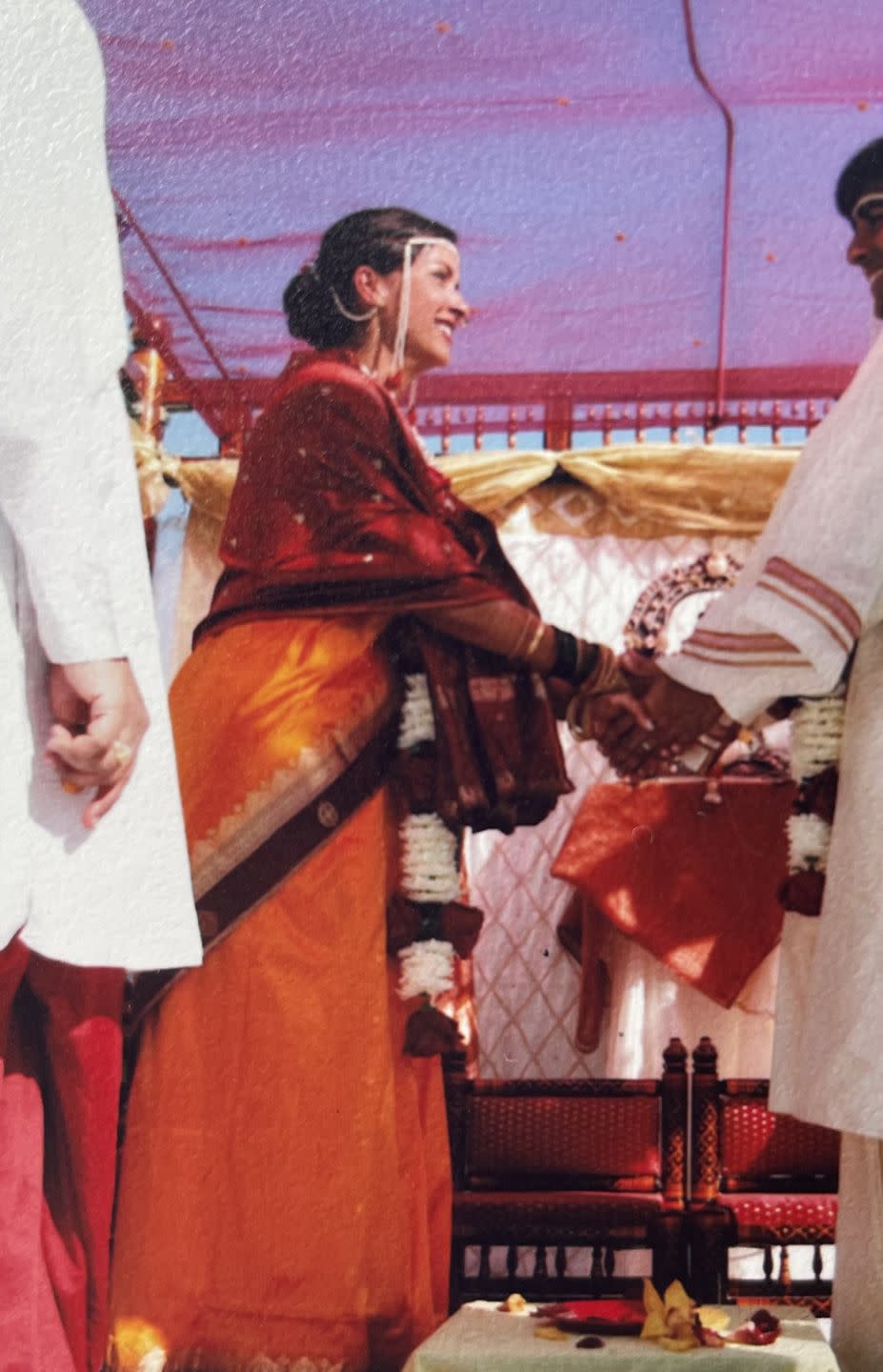
Our marriage worked while we balanced our powerful careers in private equity and TV broadcasting in New York. We were too busy to address our differences, believing our shared culture, career aspirations, and religion were enough. As a newlywed, I desired to make a home for us, but as my career thrived, I outsourced help to ensure household order and marital peace. But as our partnership began showing more signs of frailty, I begrudgingly took over as CEO of the home.
Child-rearing added many more responsibilities for me as I managed routines and bottle times while working. This was the time for the American part of our coupleship to kick in, with the equality and teamwork I journaled about decades prior. It never fully did. Space grew between us; communication and hugs disappeared.
Seeking a solution, I transitioned to part-time work, while my husband delved more into his career and his own dharma as the provider for three children. Email replies to my husband asking for help increasingly read, “I can’t. Can you handle it?” Yes, I could. But I didn’t want to. Career-less, I felt I held an inferior role.
But I can’t get divorced, I reminded myself, I’m Indian. The lack of Google results on “Indian divorce” reinforced this belief. Why do the divorcees and their tales disappear? I wondered. Is this my fate?
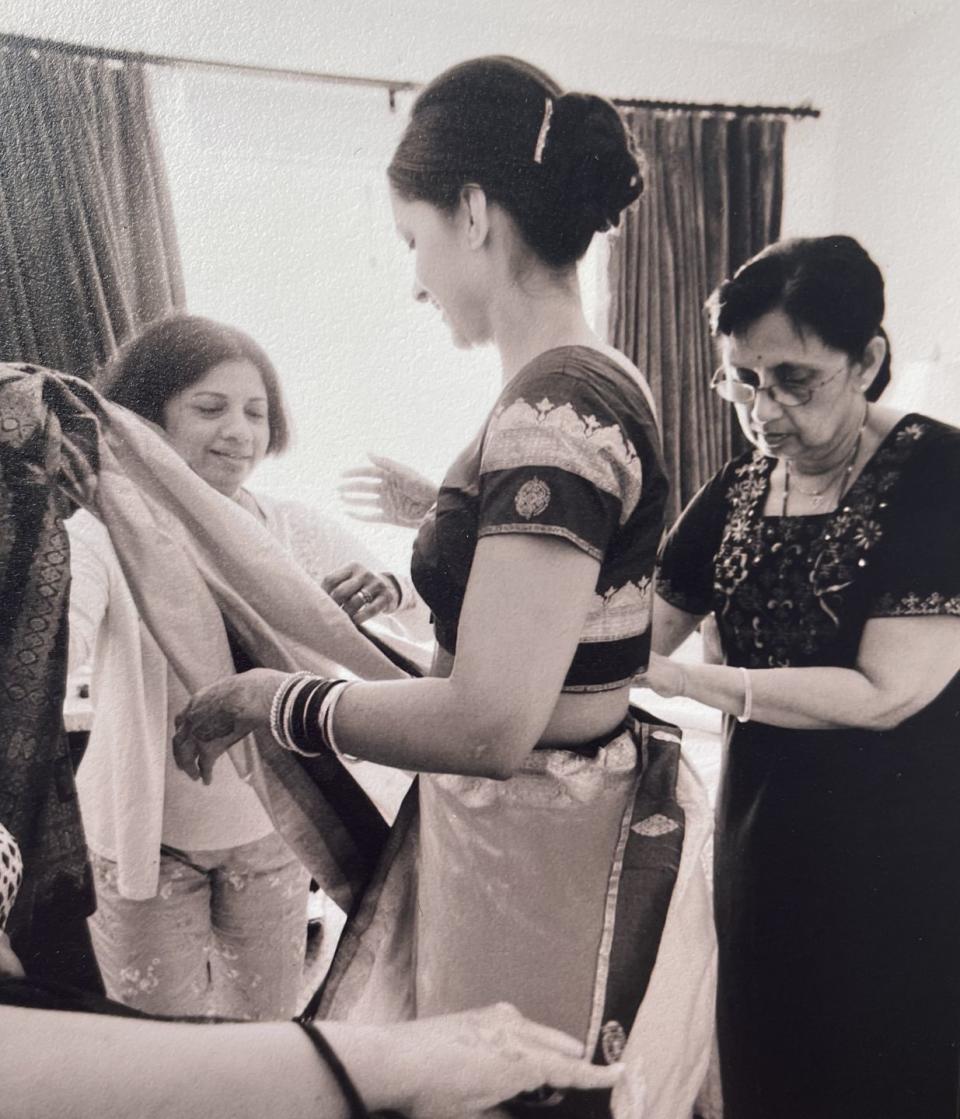
Isolated and despondent, I turned to my parents. My mother, the mouthpiece for my upset father, said, “There are two alphas in this marriage. Someone needs to be a beta.” My gender dictated my bending into submissiveness. So I tried, with limited success.
I delved into self-help and religion. In the Bhagavad Gita, Hinduism’s main religious book, Krishna consoles the ultimate warrior Arjuna, who is paralyzed on a battlefield. Despite a lifetime of warrior training, he rejects the call to battle family in an epic war. A discouraged Arjuna engages with his divine charioteer, Krishna, about his role. Arjuna believes his path involves nonviolence, siding with kinsmen. One interpretation is that Krishna tells Arjuna that in not fighting, the order of the universe is disturbed. As a warrior, he must fulfill his duty.
Like Arjuna, I was paralyzed on the battlefield of my own life. I stood between cultures, facing my parents, husband, and an uncertain future. Just stay until the children are in college, I told myself. But our preschooler crystallized the inevitable. He was reeling from a fight with his siblings when I shared some advice. “People who love each other fight, ” I explained, “and then we forgive them.” He asked, “Even you and Baba?” “What do you mean?” I replied. He asked me if I loved his father. I deflected, “What do you think?” He shook his head and wept into my side. I wept too. Our charade was detectable to the children. Eventually, my husband and I quit marital therapy. This final act created clarity that I could not wait another decade to leave an unhappy marriage for my kids. It was time.
My divorce threatened a separation with not just my husband, but also my parents and culture. I did not see my parents for a year. My father declared that he would not enter a home where the man of the house was not living, as divorce was against his values. As joint spokesperson, my mother declared that my divorce was “the price we pay for coming to America.”
In a way, that is true. Here, our family tree suffered irrevocable mutations. I may have amputated mine by divorcing, but I rebel against having to abandon my heritage as punishment. I refuse to disappear, as Google search results and cultural norms indicate should be my path.
Instead, powered by reimagined, Western values, I created a new family life with blended norms. I started with an “ABCD” divorce. In it, we leave behind our marriage but preserve elements of an Indian-American family. For example, my ex-husband and I attend Diwali parties as a family, co-host our children’s birthday parties, and plan family vacations to Disney World, sleeping in adjacent hotel rooms. Our approach is both Indian and American.

Our unique arrangement has softened my father’s notion of divorce. He also began to miss his grandchildren, opening the door to a reunion, which my mother brokered. Now, I am on more honest, equal terms with my parents. Though India has become more progressive, my parents are driven by the values that existed there when they left the country. Hence, we still remain vague about my ex-husband’s absence at community events.
One day, as we opened a box of wall hangings in my new home, my father said that while he doesn’t believe in divorce, he patted me on the back and added, “But, I support you.” In that moment, my Family Ties dream finally materialized. Reaching over the marital plaques, we grabbed for school photos and Krishna images to hang on the blank walls that will house my new life.
You Might Also Like

